In sports, almost 80% of perceptual input is visual.
The physical performance needs of athletes are always evolving, and visual acuity and performance is a key part of the equation. Athletes from school-age through professional levels need to be able to evaluate their hand-eye coordination, reaction and response speeds, and ability to quickly and accurately evaluate the objects and environment around them.
Whether it’s pre-season preparation with physicals, performance training, or injury and concussion management, building specialized sports vision care and treatment offerings can add value and opportunity for your optometry practice.
“My personal experience is that you can offer some level of sport vision services by just changing your thinking and using some of the tools that we already have in our exam rooms,” says Keith Smithson, Chair of the AOA Sports Performance & Vision Committee and OD at Northern Virginia Doctors of Optometry. “Every patient needs their eyes to perform in challenging situations—whether that’s on the playing field or merging onto an 8-lane highway.”
Want to add sports vision specialization to your practice? Start with a three-step approach that many professionals have used to build their sports vision capabilities and practice from the ground up using RightEye solutions.
Invest in Advanced Technology
Frederick Edmunds, OD of XtremeSight Sports Vision works with elite athletes to help them identify skill deficits and develop personalized programs to help them improve. He’s invested in RightEye’s Functional Vision EyeQ and Sports Vision EyeQ technologies to give his practice an edge when serving these discerning clients.
RightEye solutions help professionals like Dr. Edmunds to precisely measure and evaluate the specific vision skills that modern athletes need to stay on top of their game, from dynamic visual focus to eye movement speed, smooth visual pursuit, and more.
“There is no other system that allows you to effectively evaluate ocular movements,” he explains. “I use it in all my evaluations now, and it gives me the best information about eye movements while allowing me to not only qualify but quantify deficits in tracking and develop programs to address them.”
Having cutting-edge technologies as a part of your practice can set you apart from the competition and provide value to patients that they can’t find anywhere else.
Build a Practice Within a Practice
Dr. Adam Clarin is part of a well-established family eye care practice in Miami and was looking for ways to both expand his current base of clients as well as offer new services to his existing clients to help set his practice apart.
He started by setting realistic and achievable goals for his first year, establishing pricing for dedicated sports vision services that reflected other athletic training services in his local market and marketing his services to local athletes, trainers and coaches.
His investment in RightEye Functional Vision EyeQ helped him add new testing and training technologies to his practice.
“Investing in technology to go beyond the eye chart was a no-brainer for me,” he explains. “It helps me connect with patients and ensures they have the kind of experience they won’t get in other doctors’ offices.”
Dr. Clarin is able to offer tests for sensory skills and eye tracking that measure his athletes’ vision strengths and weaknesses and compare their performance to peers and other elite athletes. That testing helped high school baseball player Jared identify some eye teaming issues that were affecting his performance. After just 6 weeks of training on eye movement control with Dr. Clarin and RightEye, Jared’s visual skills have improved along with his confidence.
By building a practice within his existing successful practice, Dr. Clarin could methodically and gradually add new services, capabilities, and revenue while continuing to serve his existing patients.
Double Down on Sports Vision
Once your sports vision practice gains traction, consider whether and how a more serious commitment to the discipline might be right for your business.
Focusing more time and skills on sports vision allows optometrists to not only offer evaluations and assessments of visual skills and deficits, but to offer interventions and customized treatment programs to correct any problems that surface, develop sport-specific knowledge and specialization, and even advise or consult for teams and sports organizations on visual performance.
“At the highest levels of sports vision practice, it’s very important to effectively communicate how your recommendations translate to better on-field performance,” explains Alex Andrich, OD, FCOVD of The Vision Development Team and President of the International Sports Vision Association.
With the help of technology advancements like RightEye’s suite of eye-tracking solutions, doctors can carve out an important niche to serve this community exclusively and in a way that wasn’t possible previously.
The sports and digital health landscapes are broad, dynamic and constantly evolving. That means there’s ample opportunity to fuse technology with science, deliver specialized sports vision care in new and exciting ways, and build optometry practices that are not only strong today, but poised for a bright and exciting future tomorrow.








 Bethesda, Maryland, USA
Bethesda, Maryland, USA